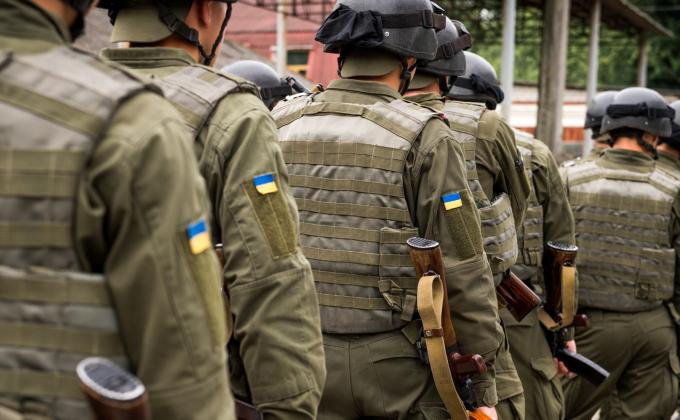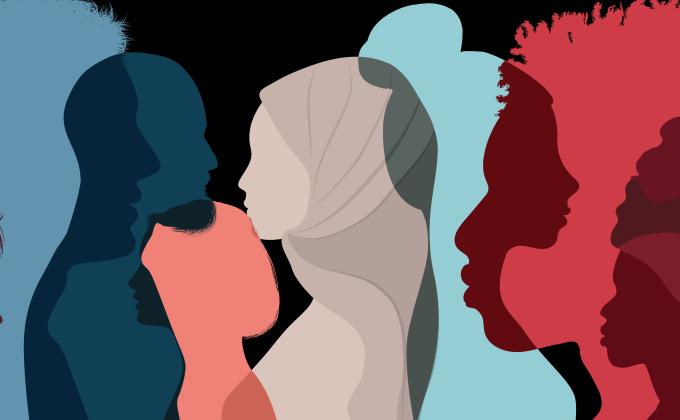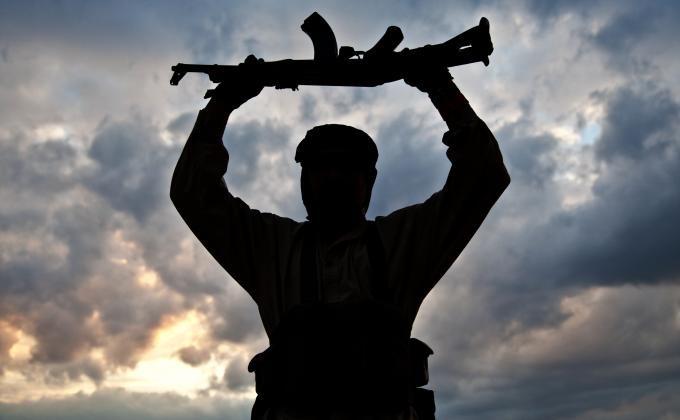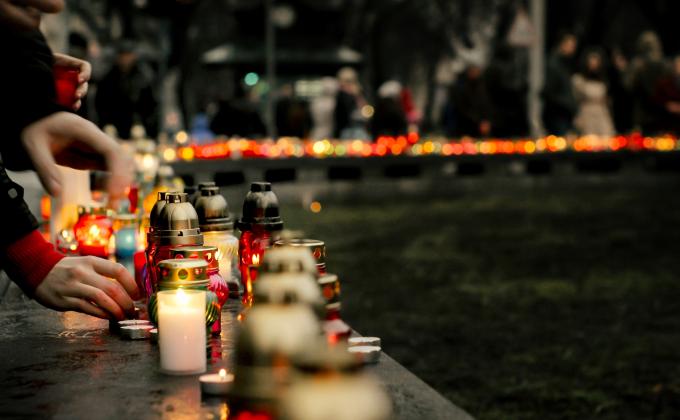On 28 March 2022, the Belgian Minister of Justice hosted a meeting of the “Vendôme Group” at the Egmont Palace in Brussels. The participants were the Ministers of Justice of France, Germany, the Netherlands, Italy, Spain, and Luxembourg. Previous meetings of the group took place in response to the terrorist attacks in Paris, Brussels, and Berlin, but this time the main items on the agenda had to do with the war in Ukraine. In addition to exploring ways to strengthen European sanctions against Russia, the ministers “further discussed the issue of Europeans joining the Ukrainian foreign legion”.
Earlier statements made by European government officials, such as the British Foreign Secretary, seemed to suggest governmental support for citizens who wanted to volunteer to join the conflict. In the same vein, several other countries, including Germany, Denmark, Canada, Latvia and the Netherlands, previously announced that they are not going to prosecute people travelling to the war zone to fight on the Ukrainian side. The Vendôme meeting, however, turned out to be a step in the other direction, as the ministers stated they “univocally discourage Europeans to join the fight on the battleground.” Similarly, the British Foreign Secretary walked back her earlier comments. But even then, they did not threaten aspiring volunteers with persecution.
These mixed signals reflect the complexity of the issue, which is made more pressing by the numbers involved. Since President Zelenskyy officially called for help from international volunteers, some 20,000 volunteers have reported for duty in the Ukrainian armed forces. Most of these foreign volunteers have ended up joining the International Legion of Defense of Ukraine (in short, the International Legion), which was specifically created to offer foreign citizens the possibility of joining the resistance against the Russian invaders.
While it may remain legal for citizens in many states to volunteer with the International Legion in Ukraine, past research and experience raise some points of consideration related to people travelling abroad to fight wars in other countries. This article outlines several of these considerations relevant to volunteers in Ukraine, which may have implications for European governments. It will first assess the security risks posed by volunteers travelling to Ukraine. Will they, as some fear, create a blowback in the way foreign terrorist fighters have done in the past? The next section will point to some other risks that might emerge, depending on how the war will be waged on the Ukrainian side.
Implications of fighting in conflicts abroad
There are several implications associated with states not taking measures to keep their citizens from joining a conflict abroad. First, volunteers will have gained combat experience, will possibly have been active in highly ideological environments and will have built (transnational) networks of likeminded fighters. This foreign fighter blowback has been a serious point of concern with returnees who fought with ISIS in Iraq and Syria, as exemplified by the attacks in Paris (2015) and Brussels (2016) that were (co)perpetrated by returnees.
In addition, far-right volunteers in the Ukrainian conflict could, like their jihadist counterparts in the Caliphate, establish ties with likeminded fighters, which may lead to international networks that might provide a boost to domestic chapters of extremist groups or structures. There is indeed some precedent for this in the far-right movement. During the 1990s, German neo-Nazis who fought in the former Yugoslavia alongside Croatia later set up paramilitary training camps, remained influential figures within the far-right scene, and smuggled weapons and explosives from the conflict theatre back to Germany.
What is different today?
Against this background it might stand to reason that the current wave of volunteers in Ukraine poses a similar threat; they, too, might commit attacks or maintain transnational networks when they are back in their home countries. At the same time, the group of people currently travelling to Ukraine is starkly different from the foreign fighters who joined ISIS in the early 2010s, and even from the first wave of volunteers who joined the war in Ukraine around 2014-2016.
Crucially, participation now appears to be much less ideologically-driven than in the other two foreign fighter waves. Many, even if not all, of those who travelled to Ukraine around 2014 to join the war on either the Ukrainian or (pro-)Russian side were attracted to extremist ideologies, and some analysts considered the war a “playground for the far-right”. But according to Kacper Rekawek, who has done extensive research into foreign fighters in Ukraine, “politics comes up rarely, if at all” among aspiring fighters now. Volunteers travelling to Ukraine are doing so to repel an act of Russian aggression against an innocent country, not to implement an ideological agenda.
Moreover, these individuals are joining the International Legion, which is part of the Ukrainian army. This means that they are joining the armed forces of a government openly supported by (most) Western governments. They are not joining a rebel group or civilian militia, let alone a movement that has declared “war on the West,” like ISIS.
In addition, while these individuals are already less ideologically motivated upon leaving to join the war, their incorporation into the Ukrainian armed forces makes it less likely that they will be exposed to right-wing extremist actors and ideologies after they get there. Compared to 2014, when around 2,000 fighters from Western countries went to Ukraine, the number of volunteers in 2022, as has been mentioned above, has reached roughly 20,000. Thus, the Ukrainian government is currently in a position to be more selective - prioritising army veterans with military experience, rather than individuals who want to gain military experience. Due to the scale and sudden birth of the International Legion, the volunteer mobilisation remains “chaotic”, but there is nevertheless something of a procedure in place to turn down those who do not fit the right profile.
Based on these differences, the potential risks identified above appear manageable. It should also be noted that the number of violent incidents involving fighters from the first wave has been low. There are, however, other potential complications governments need to take into account when taking a position on foreign volunteers. In order to appreciate those, we need to acknowledge the possibility of a Ukrainian insurgency.
The likelihood of an insurgency
Having scaled down their ambitions after a disastrous first stage of the invasion, the Russian armed forces are currently fighting to take Mariupol. Seizing this beleaguered port city would help them secure a land corridor between Crimea and the Donbas and thus assert control over a large part of southeastern Ukraine. This does not necessarily mean, however, that the fighting will be over. According to several informed observers, an insurgency is a real possibility. In such a scenario, the Russian armed forces will find themselves having to deal with opponents who use guerrilla-style sabotage actions and apply hit-and-run tactics. Indeed, this way of fighting already helped the Ukrainians push back the Russian army around Kyiv, and the long, armoured columns as seen during the move towards Kyiv and the ongoing push towards the Donbas have been frequent targets for Ukrainian ambushes.
Moreover, the southeastern part of Ukraine that is now the focus of the re-oriented Russian campaign is the territory of several militias that could wage this kind of warfare. The Azov Regiment, a government co-opted militia with decidedly far-right leanings, has a strong presence around Mariupol, where much of the fighting is currently taking place, but they will not be alone in waging an insurgent campaign against the Russians. Other groups poised to spearhead a potential Ukrainian insurgency include the Resistance Movement, a group originally established in 2019 to fight in the event Crimea and Donbas territories would ever be formally handed over to Russia.
Considering the brutal way in which the Russians attempted to take Mariupol, there will be much resentment throughout the area and thus a popular support base for anti-Russian insurgent groups. After all, repression or occupation by enemy forces can lead populations in conflict areas to rally around insurgent groups. Given the widespread hatred towards the Russians, there are bound to be people who will be willing to hide or transport weapons, provide the insurgents with operational intelligence, and provide other small services.
The Ukrainian special operations forces are already taking the lead in preparing an anti-Russian insurgency. This insurgency will most likely be carried by Ukraine’s special forces, volunteer militias within the army, and the local population, but they will be supported by and will be working in tandem with the Ukrainian army’s regular forces. Therefore, the latter, including the foreign volunteers, will also be implicated in the insurgency’s activities. This is what might complicate matters.
Insurgents going rogue
At this point in the war, governments may believe that their citizens will do little else in Ukraine but fight the Russians. Unfortunately, this may turn out to be a rather sanguine assessment of the risks involved if foreign volunteers end up working with an anti-Russian insurgency. Insurgent wars can be drawn-out and vicious, and the insurgents fighting it sometimes end up hurting the cause for which they are purportedly fighting.
For instance, when demoralised, insurgents may sell their weapons, sometimes even to their enemies. In defeat, they may lose them. As a result, what may emerge is an illicit weapons market like the one that appeared after the wars in Yugoslavia. In a grim reminder of the potential impact of such a development, weapons from the Yugoslav war have been used in terrorist attacks in Europe in recent years.
Another risk is that insurgents may turn their weapons against the local population, perhaps because they need to force the latter into cooperation or to show strength to their opponents, or because they need to quench their thirst for resources. Regarding the latter point, some insurgent groups have been known to set up protection rackets in the areas under their control, or they engage in illicit trade, sometimes to the point where they lose sight of their political objectives and become hard to distinguish from criminal networks.
In fairness, these risks are mitigated somewhat by the likelihood that the guerrilla campaign will be waged under the auspices of the Ukrainian special forces, which might help ensure a modicum of professionalism and discipline. But there are also risks related to the unsavoury nature of some groups that are likely to play an important role in an anti-Russian insurgency. The Azov Regiment, for instance, is one such group, but it has a past record of looting, assault, summary executions, unlawful detention and torture. Should they and other groups of their ilk gain the upper hand in a Ukrainian insurgency, the consequences for the population may be detrimental. As non-extremist insurgent groups may see themselves forced to engage in (de facto) alliances with far-right groups like the Azov Regiment, there is a chance that support to an insurgency will indirectly contribute to the entrenchment of the far-right in Ukraine.
Conclusion
Foreign volunteers travelling to Ukraine to fight in the war are very different from the foreign terrorist fighters who went to join ISIS in the Caliphate, and even from those foreign volunteers who went to Ukraine around 2014. From that perspective, it is understandable that several governments have taken a lenient position towards the volunteers travelling to Ukraine. However, the fact that this time it concerns a very different group of people with different motivations does not mean that letting people travel freely to Ukraine carries no risks whatsoever.
“War”, as Carl von Clausewitz asserted in his famous treatise on the subject, “is the province of uncertainty.” This applies to foreign volunteers in Ukraine as well. If Western countries choose to allow people to travel to Ukraine to fight, they also have to realise that they will have little control over the way the war is waged in the Ukrainian side, especially in the event of an insurgent campaign against a (pro-)Russian occupier. Whether this uncertainty and the consequent risks are acceptable is a political decision, but whatever they decide, Ukraine’s allies cannot be blindsided by conceivable developments that they will carry part of the responsibility for. Given the sympathy President Zelenskyy and the Ukrainian people have generated around the world, one would hope that taking a position towards foreign volunteers would be easy. The reality is that it is more complicated than we might wish. This is an ugly truth, but also an inescapable one for governments who need to make an informed decision about this.










